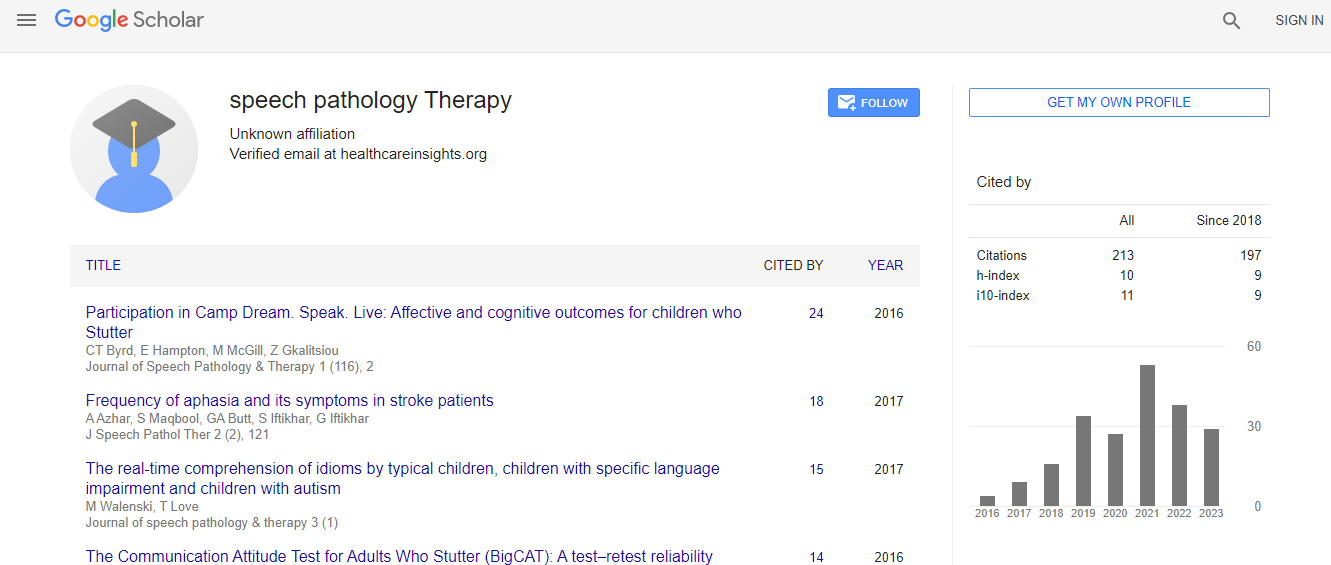Perspective Article
Theatre and Therapy Project: An Interprofessional Exploratory Pilot Study
Angela Losardo*, Derek Davidson, Kathleen T. Brinko, Kim McCullough, Louise Keegan, Emily R. Lakey, Bailey Koebernick, Chelsea Alexander, Krystopher Paschen, Cody (Jonathan) Watkins, Grace Goldson, and Amanda UferDepartment of Communication Sciences and Disorders, Appalachian State University, 720 Rivers Street, Boone, NC, USA
- *Corresponding Author:
- Angela Losardo
Department of Communication Sciences and Disorders
Appalachian State University, 720 Rivers Street, Boone, NC, USA
Tel: (828) 262-2223
E-mail: losardoas@appstate.edu
Received date: October 07, 2016; Accepted date: December 20, 2016; Published date: December 27, 2016
Citation: Losardo A, Davidson D, Brinko K, McCullough K, Keegan L, et al. (2017) Theatre and Therapy Project: An Interprofessional Exploratory Pilot Study. J Speech Pathol Ther 2:121. doi: 10.4172/2472-5005.1000122
Copyright: © 2016 Losardo A, et al. This is an open-access article distributed under the terms of the Creative Commons Attribution License, which permits unrestricted use, distribution, and reproduction in any medium, provided the original author and source are credited.
Abstract
The Theatre and Therapy Project was an interprofessional exploratory pilot study designed to examine the efficacy of theatre as a therapeutic intervention context for adolescents and young adults with intellectual disabilities and autism, all of whom had moderate to severe communication impairments. Undergraduate and graduate students from Departments of Communication Sciences and Disorders and Theatre and Dance were recruited, as well as eight client participants ranging in age from late teens to mid-twenties. The study used a pretest–posttest design using specific subtests related to communication, self-direction, and social domains from the ABAS-3 Adaptive Behavior Assessment System, Third Edition were administered, as well as a survey measuring the self-confidence of client participants. Activity-based intervention and video modeling were used to teach targeted speech, language, and social goals. This article describes implementation of this innovative program aimed at improving the communication and self-confidence of client participants. The perspectives of those who were involved in the Project are shared: a parent of a young adult with a developmental disability; students who were involved with providing intervention and collecting data; faculty members and practitioners from the Department of Communication Sciences and Disorders who supervised the speech-language pathology students; and a faculty member and practitioner from the Department of Theatre and Dance who supervised and worked with the theatre students. And finally, the challenges encountered and perceived benefits of this innovative therapeutic program are discussed.
 Spanish
Spanish  Chinese
Chinese  Russian
Russian  German
German  French
French  Japanese
Japanese  Portuguese
Portuguese  Hindi
Hindi 